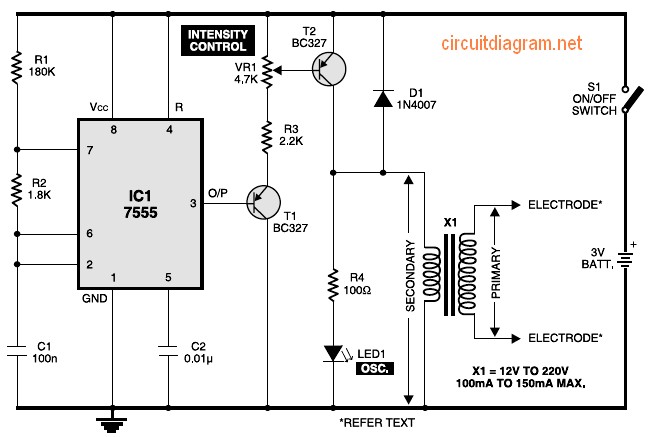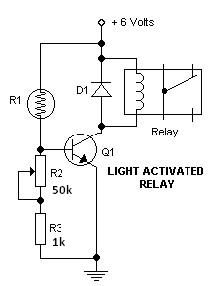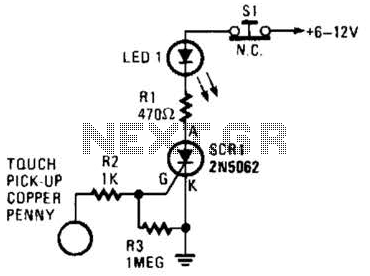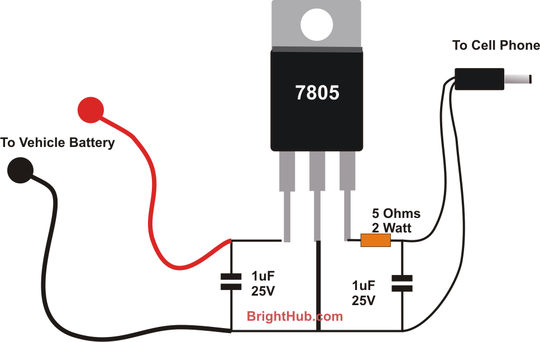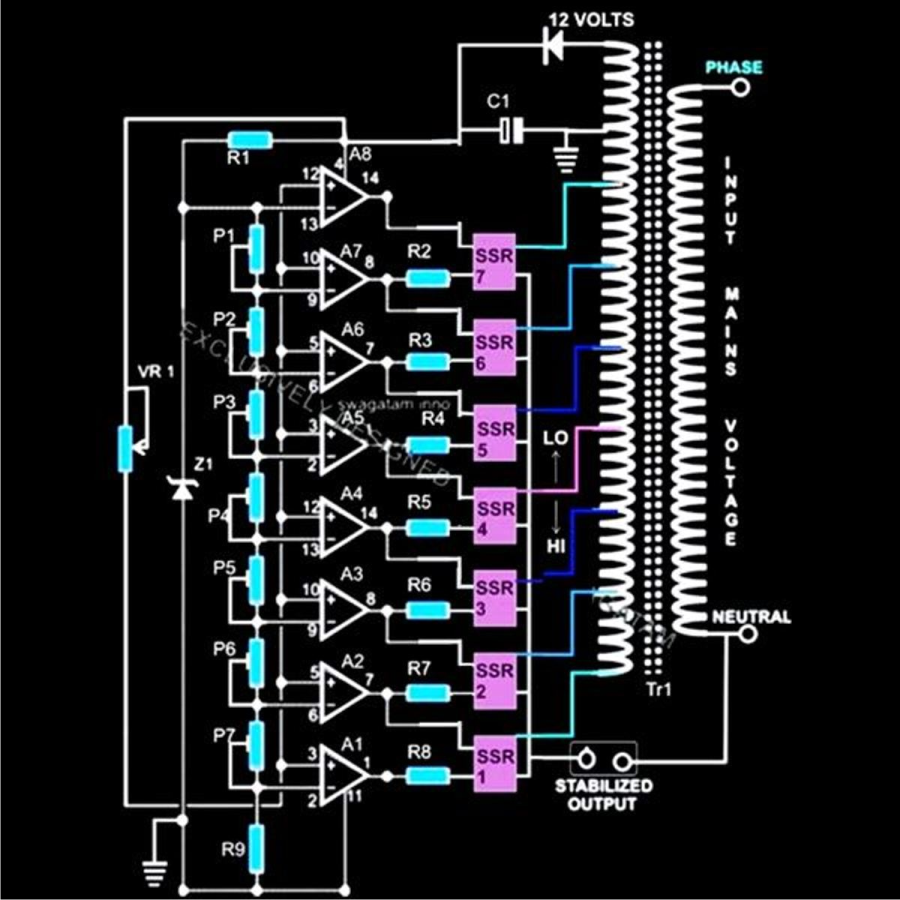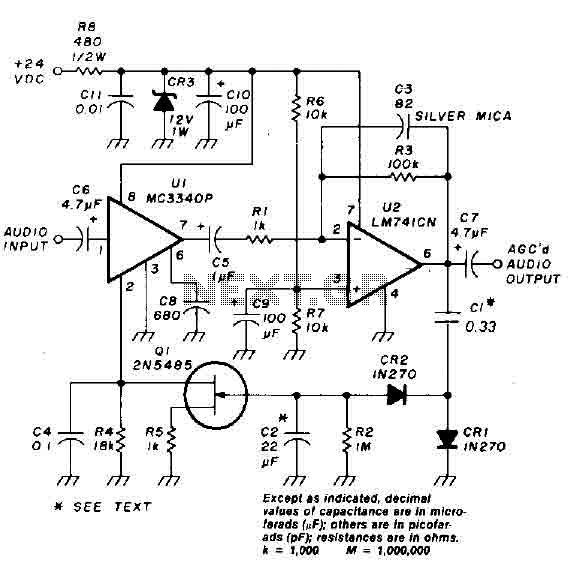
Simple Transistor Amplifier Circuit Schematic and Explanation
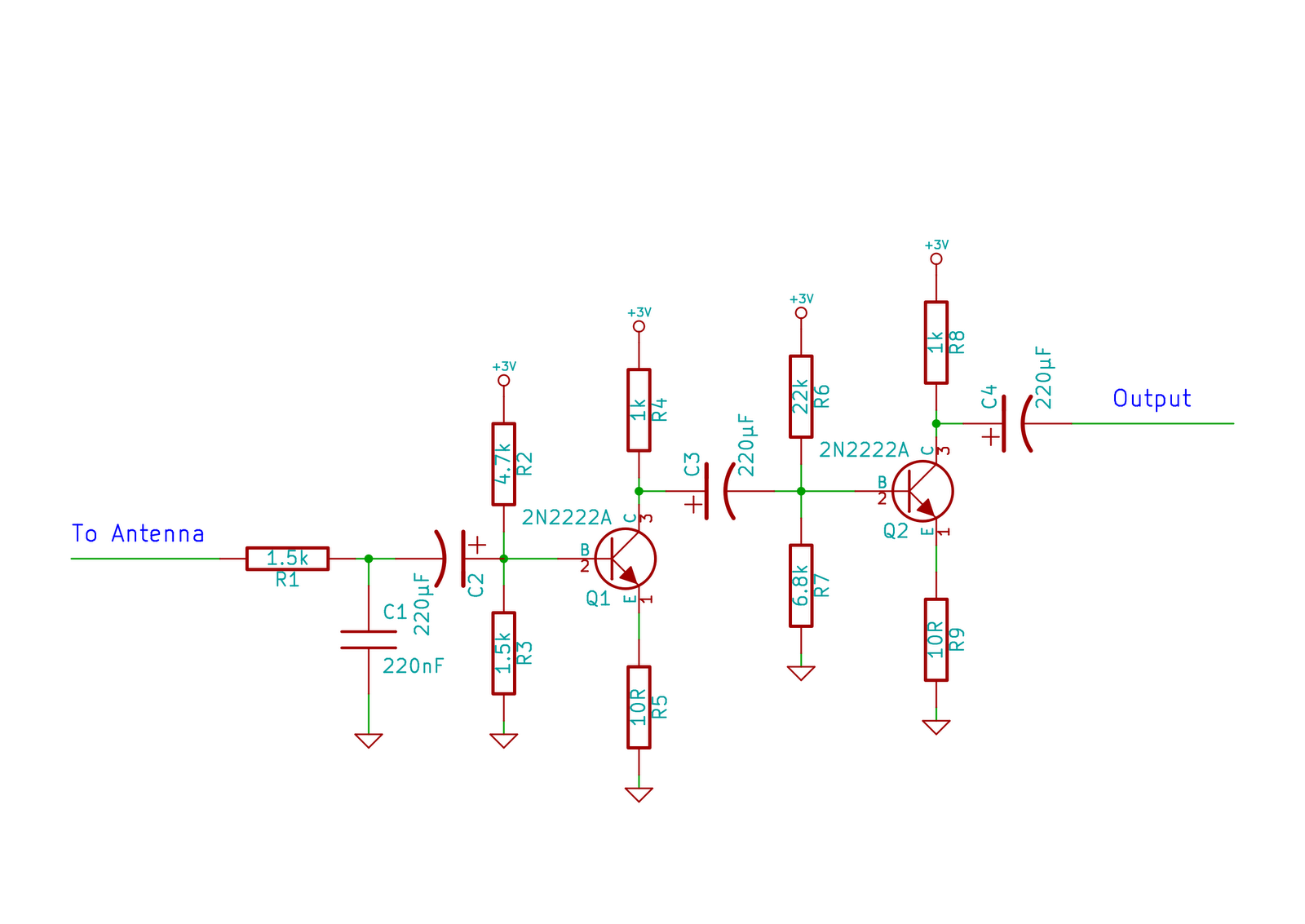
This circuit does not function as effectively as it could. It was created when the designer had a limited understanding of circuit design. An improved schematic will be developed and posted later, featuring a better design. The schematic indicates "antenna," as it was specifically used to amplify electrical noise in the environment. The circuit is straightforward and can serve as a simple signal amplifier for various applications. There is a noticeable lack of beginner-friendly information online about specific electronics topics, which may contribute to confusion. To address this potential information gap, a simple schematic and explanation will be provided. A video accompanies this post, demonstrating the circuit in action, although it is not necessary to watch the video to understand the circuit. The schematic was created using the free electronics design suite, KiCad. The circuit is a transistor amplifier, identical to the one shown in the video, capable of amplifying various signals, including audio and radio. The notation "To antenna" reflects its use in amplifying electrical noise. The 1.5k resistor (R1) and the 220nF capacitor (C1) form a low-pass filter, allowing only signals below a certain cutoff frequency to pass through. This filter prevents the circuit from picking up AM radio signals, which would distort the noise. The low-pass filter's cutoff frequency is determined by the resistor and capacitor values, known as an RC filter. Online calculators can help determine the cutoff frequency. If frequencies above approximately 500Hz should not be attenuated, the components may need to be adjusted. The capacitor (C2) blocks DC from the circuit, with a value of 220uF suitable for passing audio frequencies with minimal impedance. The two resistors (R2 and R3) form a voltage divider necessary for biasing the transistor, ensuring it operates in the appropriate range for amplification. Q1 is a 2N2222A NPN transistor, with the collector resistor (which lacks an arrow) and emitter resistor setting the transistor's gain, approximated by the formula -Rc/Re. In this case, the gain is approximately 100. Q2 serves the same function as Q1, with the surrounding resistors configured similarly. The voltage divider for Q2 uses different resistor values due to a lack of identical components from the Q1 voltage divider. The two transistors work in tandem to provide increased amplification.
The circuit operates as a basic common-emitter amplifier, which is a fundamental configuration in analog electronics. In this setup, the input signal is applied to the base of the transistor, while the amplified output signal is taken from the collector. The low-pass filter formed by R1 and C1 is crucial for filtering out high-frequency noise, which can adversely affect the performance of the amplifier by introducing unwanted signals. The cutoff frequency of the filter can be calculated using the formula:
\[ f_c = \frac{1}{2\pi RC} \]
where \( R \) is the resistance in ohms and \( C \) is the capacitance in farads. This relationship allows for the design of the circuit to be tailored to specific applications by selecting appropriate resistor and capacitor values.
The biasing of the transistors is essential for ensuring that they operate in the active region, where they can provide linear amplification. The biasing network formed by R2 and R3 for Q1 and the corresponding resistors for Q2 ensures that the transistors are correctly biased, enhancing performance and stability. The gain of the amplifier can be adjusted by varying the values of the collector and emitter resistors, allowing for flexibility in amplification depending on the application needs.
It is also important to consider the power supply voltage when designing the circuit, as it affects the maximum output signal swing. The overall design should ensure that the transistors do not saturate or enter cutoff during operation, which would result in distortion of the amplified signal. Proper thermal management should also be considered, especially if the circuit is intended for prolonged use or high signal levels, to prevent overheating and ensure reliability.
In summary, this transistor amplifier circuit provides a foundation for understanding signal amplification in electronics, with opportunities for further optimization and enhancement based on specific application requirements.This circuit doesn`t work as well as it could. I made it when I had a lesser understanding of circuit design. I`ll probably make a new and improved schematic and post later on, one that has a better design. Thanks for stopping by! Note: The schematic here says antenna , but that`s because it was used specifically to amplify electrical noise in t he environment. The circuit is explained below, and it`s easy to use as a simple signal amplifier for anything. One thing I`ve noticed about electronics is the lack of simple, newbie-friendly information on the internet about specific topics. Then again, maybe I just wasn`t looking properly. To help fill this possibly existent information gap, I`m going to post a nice, simple schematic and an explanation on what it is and how it works.
This post goes along with a video that I posted. You don`t need to watch the video to understand the circuit, but the videodemonstratesthe circuit in action. Here it is: Okay, first thing: Right click on the image and open it in a new tab or window; it will make it easier to see it and compare it to what I`m writing.
I will explain the function of each part of the circuit. For those who are interested, the schematic was done with the free electronics design suite, Kicad. The circuit you see here is a transistor amplifier circuit. It`s identical to the one seen in the video. This very simple circuit can be used to amplify signals of all kinds. Audio, radio, whatever. You may notice that it says To antenna . This is because in the video, it was used to amplify electrical noise. The 1. 5k resistor R1 and the 220nF capacitor C1 form a low-pass filter. A low pass filter, in brief, is a filter that only allows signals lower than the cut-off frequency to pass through. I used this because without the filter, it would pick up AM radio signals and distort the noise (hehe).
If you remove that, then you`ll hear a bunch of jumbled AM radio signals. It`s pretty cool! The low-pass filter`s cutoff frequency is determined by a formula that involves the value of the resistor and capacitor used. It`s called an RC Filter (Because of the Resistor and the Capacitor). You can find many calculators online for the cutoff frequency of such a filter, just look up RC filter calculator .
Unless you want to attenuate all frequencies above ~500Hz, you should remove or change these components for optimal performance. The capacitor C2 is there to block DC from the circuit. The value of 220uF is good for passing audio frequencies with minimal impedance (Higher value = lower frequencies, take a look at capacitive reactance).
The two resistors R2 and R3 are a voltage divider, this is needed to bias the transistor. Biasing a transistor means to give the transistor enough voltage that it`s partly on, but not so much that it turns on fully. This is necessary for an amplifier. Q1 is a 2N2222A NPN transistor. The collector resistor (The collector is the one without the arrow) and the emitter resistor set the gain of the transistor.
The gain can be approximated with -Rc/Re (The minus is there because the signal is inverted with this amplifier). Rc is the collector resistor, and Re is the emitter resistor. In this case, the gain is ~100 (~ means approximately). Q2 is the same as Q1, and the resistors around it have the same function. The voltage divider uses different value resistors, but that`s only because I didn`t have enough resistors of the same type as the voltage divider on Q1 (They were in use on some other projects).
The Q2 voltage divider gives roughly the same voltage output as the Q1 divider. There are two transistors because each one amplifies the signal more. You might think Why can`t I just use one transistor with a really big collector resistor . That`s an excellent question. You can`t make the collector resistor (Rc) too big, because in a common-emitteramplifier (Which is what this circuit uses), Rc sets the outpu 🔗 External reference
The circuit operates as a basic common-emitter amplifier, which is a fundamental configuration in analog electronics. In this setup, the input signal is applied to the base of the transistor, while the amplified output signal is taken from the collector. The low-pass filter formed by R1 and C1 is crucial for filtering out high-frequency noise, which can adversely affect the performance of the amplifier by introducing unwanted signals. The cutoff frequency of the filter can be calculated using the formula:
\[ f_c = \frac{1}{2\pi RC} \]
where \( R \) is the resistance in ohms and \( C \) is the capacitance in farads. This relationship allows for the design of the circuit to be tailored to specific applications by selecting appropriate resistor and capacitor values.
The biasing of the transistors is essential for ensuring that they operate in the active region, where they can provide linear amplification. The biasing network formed by R2 and R3 for Q1 and the corresponding resistors for Q2 ensures that the transistors are correctly biased, enhancing performance and stability. The gain of the amplifier can be adjusted by varying the values of the collector and emitter resistors, allowing for flexibility in amplification depending on the application needs.
It is also important to consider the power supply voltage when designing the circuit, as it affects the maximum output signal swing. The overall design should ensure that the transistors do not saturate or enter cutoff during operation, which would result in distortion of the amplified signal. Proper thermal management should also be considered, especially if the circuit is intended for prolonged use or high signal levels, to prevent overheating and ensure reliability.
In summary, this transistor amplifier circuit provides a foundation for understanding signal amplification in electronics, with opportunities for further optimization and enhancement based on specific application requirements.This circuit doesn`t work as well as it could. I made it when I had a lesser understanding of circuit design. I`ll probably make a new and improved schematic and post later on, one that has a better design. Thanks for stopping by! Note: The schematic here says antenna , but that`s because it was used specifically to amplify electrical noise in t he environment. The circuit is explained below, and it`s easy to use as a simple signal amplifier for anything. One thing I`ve noticed about electronics is the lack of simple, newbie-friendly information on the internet about specific topics. Then again, maybe I just wasn`t looking properly. To help fill this possibly existent information gap, I`m going to post a nice, simple schematic and an explanation on what it is and how it works.
This post goes along with a video that I posted. You don`t need to watch the video to understand the circuit, but the videodemonstratesthe circuit in action. Here it is: Okay, first thing: Right click on the image and open it in a new tab or window; it will make it easier to see it and compare it to what I`m writing.
I will explain the function of each part of the circuit. For those who are interested, the schematic was done with the free electronics design suite, Kicad. The circuit you see here is a transistor amplifier circuit. It`s identical to the one seen in the video. This very simple circuit can be used to amplify signals of all kinds. Audio, radio, whatever. You may notice that it says To antenna . This is because in the video, it was used to amplify electrical noise. The 1. 5k resistor R1 and the 220nF capacitor C1 form a low-pass filter. A low pass filter, in brief, is a filter that only allows signals lower than the cut-off frequency to pass through. I used this because without the filter, it would pick up AM radio signals and distort the noise (hehe).
If you remove that, then you`ll hear a bunch of jumbled AM radio signals. It`s pretty cool! The low-pass filter`s cutoff frequency is determined by a formula that involves the value of the resistor and capacitor used. It`s called an RC Filter (Because of the Resistor and the Capacitor). You can find many calculators online for the cutoff frequency of such a filter, just look up RC filter calculator .
Unless you want to attenuate all frequencies above ~500Hz, you should remove or change these components for optimal performance. The capacitor C2 is there to block DC from the circuit. The value of 220uF is good for passing audio frequencies with minimal impedance (Higher value = lower frequencies, take a look at capacitive reactance).
The two resistors R2 and R3 are a voltage divider, this is needed to bias the transistor. Biasing a transistor means to give the transistor enough voltage that it`s partly on, but not so much that it turns on fully. This is necessary for an amplifier. Q1 is a 2N2222A NPN transistor. The collector resistor (The collector is the one without the arrow) and the emitter resistor set the gain of the transistor.
The gain can be approximated with -Rc/Re (The minus is there because the signal is inverted with this amplifier). Rc is the collector resistor, and Re is the emitter resistor. In this case, the gain is ~100 (~ means approximately). Q2 is the same as Q1, and the resistors around it have the same function. The voltage divider uses different value resistors, but that`s only because I didn`t have enough resistors of the same type as the voltage divider on Q1 (They were in use on some other projects).
The Q2 voltage divider gives roughly the same voltage output as the Q1 divider. There are two transistors because each one amplifies the signal more. You might think Why can`t I just use one transistor with a really big collector resistor . That`s an excellent question. You can`t make the collector resistor (Rc) too big, because in a common-emitteramplifier (Which is what this circuit uses), Rc sets the outpu 🔗 External reference
Warning: include(partials/cookie-banner.php): Failed to open stream: Permission denied in /var/www/html/nextgr/view-circuit.php on line 713
Warning: include(): Failed opening 'partials/cookie-banner.php' for inclusion (include_path='.:/usr/share/php') in /var/www/html/nextgr/view-circuit.php on line 713
